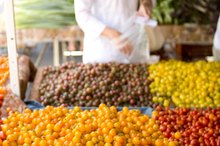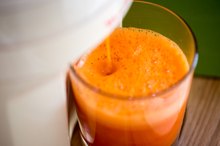Fructose Free Vegetables
When you walk through your local grocery, you may note that there are a couple of aisles dedicated to fruits and vegetables at the outside border of the store and a great many aisles dedicated to food in bags, boxes, bottles and cans that fill the middle aisles. Some people spend more time and money at the edge of the store, and some spend more in the middle. For those with fructose intolerance, danger, or at least discomfort, lurks throughout the store.
Fructose Intolerance
Fructose intolerance, sometimes referred to as hereditary fructose intolerance, is an inherited condition marked by the inability to digest fructose, which is the sugar in fruit. While the usual dietary remedy for many conditions is “eat vegetables,” for those with fructose intolerance even vegetables pose risk, because:
- vegetables
- too
- contain fructose,
- some vegetables contain sufficient fructose to create problems for the intolerant 2
Cause
Do Vegetables Cause Diarrhea?
Learn More
People with fructose intolerance either lack or are deficient in the enzyme fructose-1-phosphate aldolase, which normally breaks down fructose into bio-usable glucose. Consequently, fructose-1-phospate accumulates in their liver, kidneys and small intestine. Problems can occur quickly after consuming fructose, but problems also develop as fructose-1-phosphate accumulates in the body. The fructose intolerant person must monitor her consumption of fructose from all food sources, including vegetables, to ensure that she does not overload.
- People with fructose intolerance either lack or are deficient in the enzyme fructose-1-phosphate aldolase, which normally breaks down fructose into bio-usable glucose.
- Problems can occur quickly after consuming fructose, but problems also develop as fructose-1-phosphate accumulates in the body.
Symptoms
Symptoms can include:
- bloating
- diarrhea
- vomiting
- dehydration
- severe abdominal pain due to gas
- excessive urination
- sweating
- extreme thirst
- confusion due to low blood sugar
Accumulative effects can be worsened by eating or drinking anything that contains high amounts of fructose. Left untreated, fructose intolerance can lead to loss of nutrition, such as calcium and iron, coma or death.
Vegetable Serving Size
Effects of Eating Too Few Vegetables
Learn More
For those with intolerance, the amount of vegetables consumed in one sitting should be limited, depending on the severity of the intolerance. Generally, the serving size for vegetables is ¼ to ½ cup, with one cup allowed for leafy green vegetables. The recommended daily levels of low fructose vegetables range from one and a half to two cups per day, according to the University of Virginia Health System 2.
Recommended Vegetables
Low-fructose vegetables that can be eaten up to four times daily contain 0 to .2 g of fructose.
Medium-low fructose vegetables contain .3 to .6 g of fructose.
Related Articles
References
- “Prescription for Nutritional Healing;” Phyllis Balch; 2006
- University of Iowa Health Care: Dietary Fructose Intolerance (DFI)
- Biesiekierski JR. Fructose-induced symptoms beyond malabsorption in FGID. United European Gastroenterol J. 2014;2(1):10-3. doi:10.1177/2050640613510905
- Fedewa A, Rao SS. Dietary fructose intolerance, fructan intolerance and FODMAPs. Curr Gastroenterol Rep. 2014;16(1):370. doi:10.1007/s11894-013-0370-0
- National Institutes of Health. Hereditary fructose intolerance. Updated February 11, 2020.
- Mann NS, Cheung EC. Fructose-induced breath hydrogen in patients with fruit intolerance. J Clin Gastroenterol. 2008;42(2):157-9. doi:10.1097/01.mcg.0000225667.53673.02
- Choi Y, Kraft N, Zimmerman B, Jackson M, Rao S. Fructose Intolerance in IBS and Utility of Fructose-Restricted Diet. J Clin Gastroenterol. 2008 Mar;42(3):233-8. doi:10.1097/MCG.0b013e31802cbc2f
- Ebert K, Witt H. Fructose malabsorption. Mol Cell Pediatr. 2016 Dec;3:10. doi: 10.1186/s40348-016-0035-9
- Yao CK, Tuck CJ. The clinical value of breath hydrogen testing. J Gastroenterol Hepatol. 2017;32 Suppl 1:20-22. doi:10.1111/jgh.13689
- Jung KW, Seo M, Cho YH, et al. Prevalence of fructose malabsorption in patients with irritable bowel syndrome after excluding small intestinal bacterial overgrowth. J Neurogastroenterol Motil. 2018;24(2):307-316. doi:10.5056/jnm17044
- Fedewa A, Rao SS. Dietary fructose intolerance, fructan intolerance and FODMAPs. Curr Gastroenterol Rep. 2014;16(1):370. doi:10.1007/s11894-013-0370-0
- Johns Hopkins Medicine. (n.d.). Gastroenterology and Hepatology: Breath Testing.
Writer Bio
Jon Williams is a clinical psychologist and freelance writer. He has performed, presented and published research on a variety of psychological and physical health issues.









